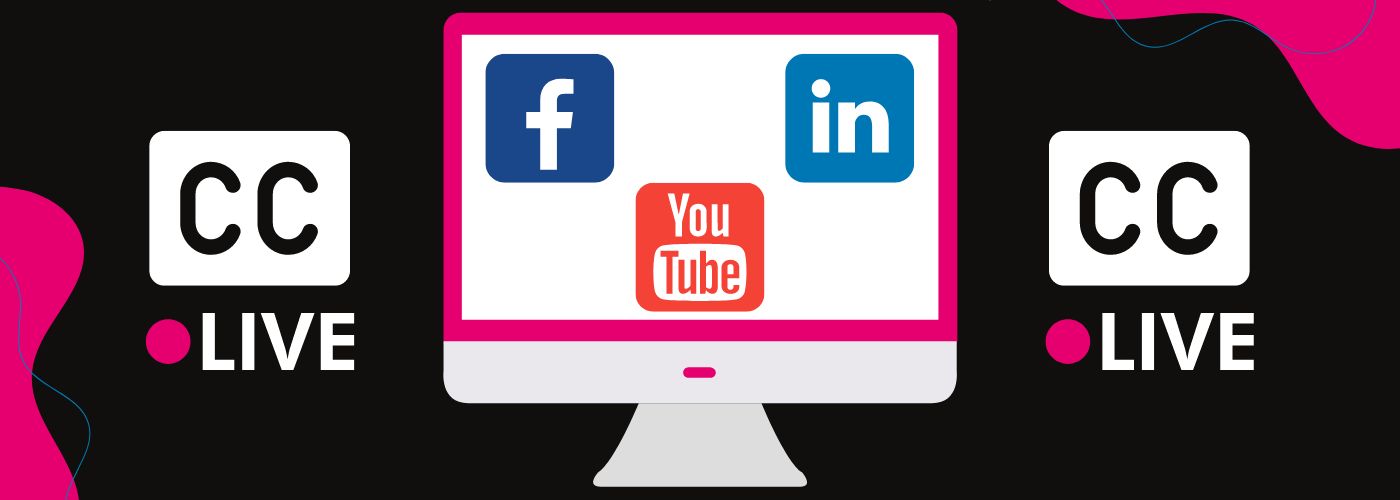Live Caption Spotlight: Social Media and Video Streaming Platforms
The Complete Guide to Caption Encoders [Free eBook]
While there is no telling what the next trending social media or video streaming platform will be, one thing is for sure: today’s most popular social networking sites aren’t going away any time soon.
Though each comes with their own nuances, what all of these applications have in common is their users’ ability to share videos in real time with the rest of the world. This means they also share a responsibility to provide live captions and/or subtitles to make the videos on their platforms accessible to all consumers.
This blog post will explain how to add live captions to various social media and video streaming platforms.
Adding Captions to Facebook Live
If you want to add real-time captions to a Facebook Live stream, you will need a caption encoder.
A caption encoder is a hardware or cloud-based device that embeds closed captioning data into your live audio/video stream. Your stream will route through this encoder so that your caption provider is able to deliver real-time caption data to be embedded. The encoder will then deliver your stream, with embedded captions, to your Facebook Live audience – enabling viewers to toggle captions on or off while they watch the livestream.
Get the rundown on caption encoders👉
Adding Captions to LinkedIn Live
LinkedIn Live is relatively new to the real-time video scene compared to most other social media sites (created in 2019), but what it lacks in experience it makes up for in selection.
Instead of offering one universal interface for streaming live videos (and thus a single method for transmitting live caption data), LinkedIn Live lets its users pick from a full menu of broadcast tools – ranging from beginner solutions that won’t cost a dime to more advanced and expensive broadcast-level streaming software.
While the former options might suffice for LinkedIn streamers who are not concerned with accessibility, the more advanced options (like Easylive, Restream, and Wowza) are better suited for users who want to ensure live captions are made available to those who need them.
Like with Facebook Live (which can also use alternative video streaming tools like Wowza), these advanced LinkedIn Live streaming methods require an encoder to enable real-time closed captioning. Once you find one that fits, you’ll just need to visit the “Third-Party Tools” section of your Resource Hub to set up the appropriate technical details before going live.
Adding Captions to YouTube Live
The good news is, not all video streaming sites require an encoder to enable live captions. YouTube Live – perhaps the most popular platform of them all – requires just a URL to provide live captions.
In order to enable captions on a YouTube live you must:
- Verify your YouTube account.
- Set your livestream to normal latency.
- Your video must be in English.
- Be free from any live streaming restrictions within the last 90 days.
- Activate your account for live streaming.
After selecting Stream from the left-hand menu, scroll down and toggle the closed captions button to on. Doing so will provide you with a Caption Ingestion URL. Copy this URL and provide it to your caption provider if you’re not using auto captions so they can transmit their live caption data when the event starts.
If that solution is too easy for you, YouTube Live also provides encoder-friendly options.
The number of social media and live video streaming platforms will only continue to grow, making media accessibility for this medium increasingly important. To learn more about the benefits of captioning your content, read this blog post or explore our website.
This blog was originally published by Alec Vohnoutka and has since been updated for comprehensiveness, clarity, and accuracy.






